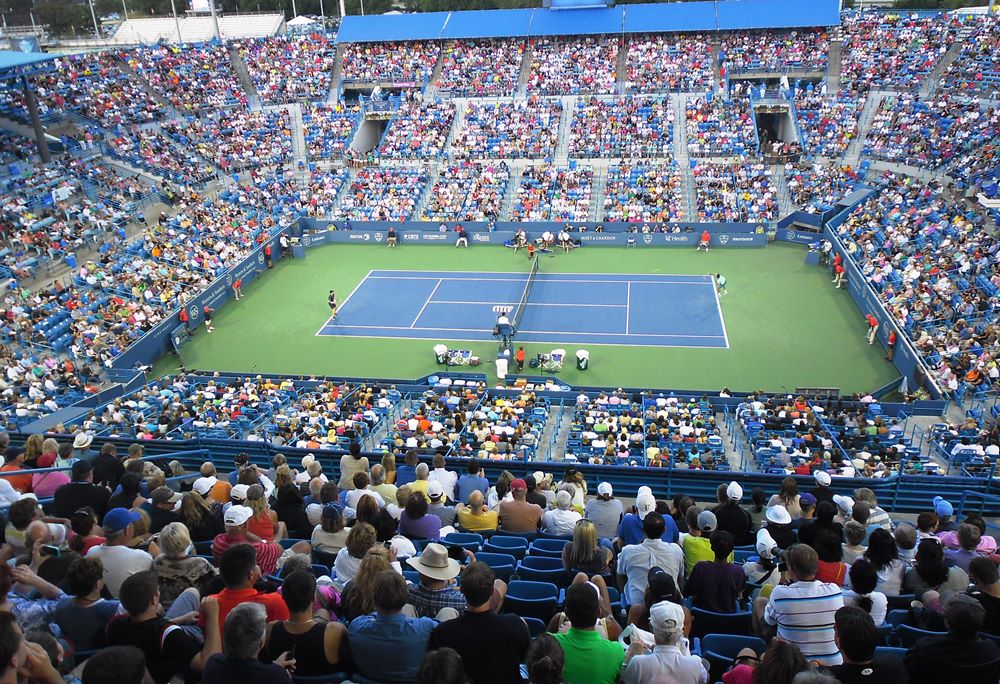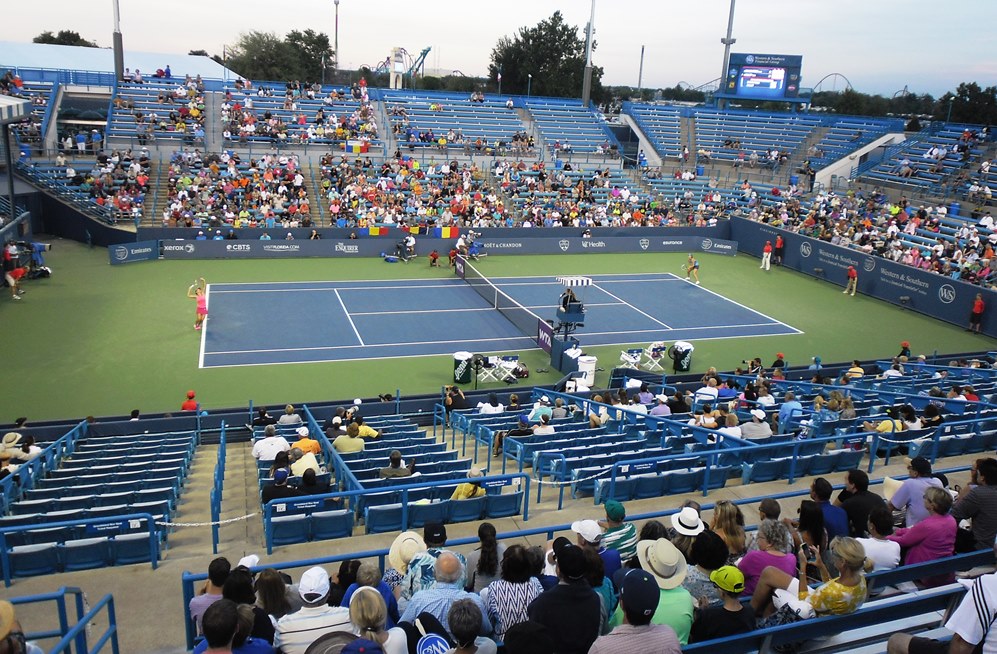One often hears the likes of Billie Jean King, and other proponents of equal pay, make the argument that the product that the WTA puts out is just as interesting as that of the ATP, or that fans are just as interested in seeing the women play as they are in seeing the men. The evidence however, as the below example will show, points yet again to the contrary. While the argument of equal pay has its merits and is beyond the scope of this article’s main point, it is time for those making the argument to use accurate statements when presenting their case, instead of throwing faulty assumptions and relying on platitudes. Once again, during Friday evening in the Western & Southern Open in Cincinnati, there was visual proof that the ATP product clearly fills more seats than that of the WTA. The tournament had two elite matches scheduled at the same time. Roger Federer squared off against Andy Murray on Center Court at 7:00 PM at the same time as Maria Sharapova took on Simona Halep on the Grandstand Court.
The comparison is fair: Federer and Murray are the two faces of the “Big Four,” two of the most recognizable faces in men’s tennis. Sharapova and Halep are equally recognizable in women’s tennis, especially since their fantastic and recent French Open final. Federer is ranked number 3 and Murray is ranked number 9 in the ATP; Halep is ranked 2 and Sharapova is ranked number 6 in the WTA. Federer and Sharapova are two of the most famous athletes in sports, certainly the most marketable ones in men’s and women’s tennis – and that is a fact; Forbes lists the two celebrities as the highest paid tennis players thanks to endorsements.
The following two pictures were taken about 10 minutes apart. In order to make it fair, they were both taken at the same score line. Here is the Center Court (max. capacity 11,425) at the beginning of the second set after Federer won the first set 6-3:

Now here is the Grandstand Court (max. capacity 5,000) at the beginning of the second set, after Halep won the first set 6-3:

Keep in mind that the Center Court has more than twice the capacity of the Grandstand (11,425 to 5,000). There is no doubt that tennis fans preferred to watch the men rather than the women in this case. This is not to say that women’s tennis does not generate interest. In fact, as soon as the Federer vs. Murray match was over, those fans on Center Court migrated quickly over to the Grandstand, packing the seats to watch Sharapova beat Halep in a thrilling three-set victory. Yet, when given similar choices, they prefer to watch men’s tennis over women’s tennis at the elite level.

I always enjoy reading your articles, Mert, and you make valid and interesting points. I believe the “shriek” factor must be considered when comparing attendance for the women and men in this case. I do not enjoy watching (listening to) Sharapova play on television, let alone in person!
Hi Joyce,
Yes, there is no doubt that Sharapova’s shriek bothers people more than the media leads one to believe (especially the mainstream tennis media – i.e. ESPN2 and the Tennis Channel commentators – considers it taboo and rarely comments on it). You also said what more than a few people said who have been around her – that she is not very likeable – which makes it all the more amazing that she remains the most marketable player on the women’s tour. I guess marketers bank on the fact that most people don’t ‘know’ her but rather ‘see’ her 🙂
However, I am not sure if the shrieking factor is enough to explain the discrepancy that one sees between the attendance for the two sides again and again. Last year in this same tournament, Marion Bartoli played the last match of her career (nobody knew at the time), 5 weeks after winning Wimbledon, in front of virtually empty stands at the Grandstand court.
Mert,
Re equal pay between the men and women, this should never happen (especially in the Slams), because you see how hard the men have to work to win a Slam. Sometimes when Serena Williams has an easy draw, she triumphs without raising a sweat. Also the men’s game has so much power and people love watching this type of tennis. In saying all that, I always enjoyed watching Steffi Graf and if I had a choice in watching a men’s match over Steffi’s match, that would have never happened 🙂
Mert, I’m really interested to know, which female player is your most favourite (present or past)?
Umit
Hi Umit,
Thanks for the input.
I was a fan of Evonne Goolagong Cawley as a youngster in the 70s. I enjoyed watching the Evert-Navratilova duels back in the days. I also liked the few Seles-Graf matches before the unfortunate stabbing. In the 2000s, Kim Clijsters was one of my favorite players as well as Justine Henin. From today’s players, I would have to say I truly enjoy watching Halep’s athleticism.